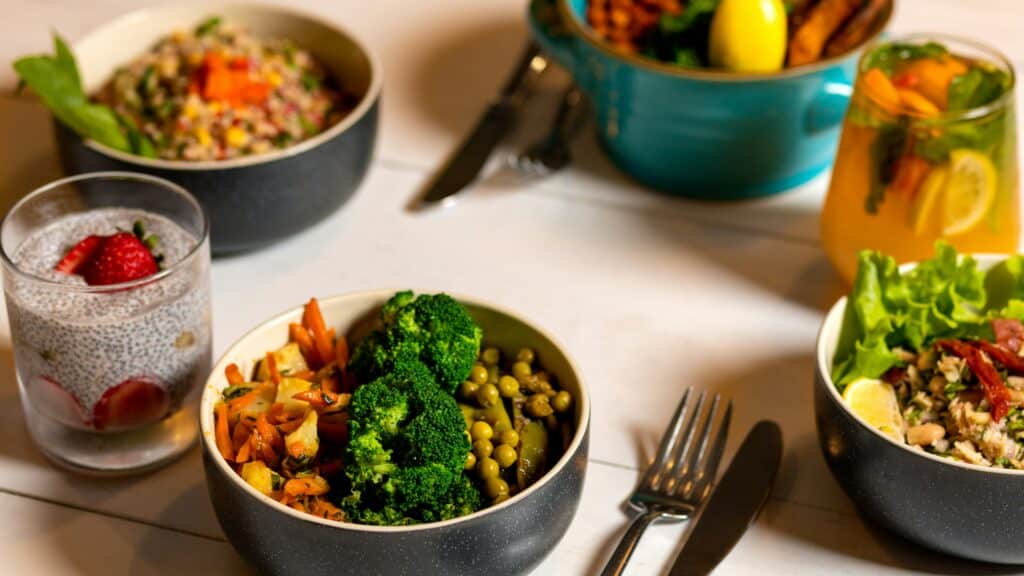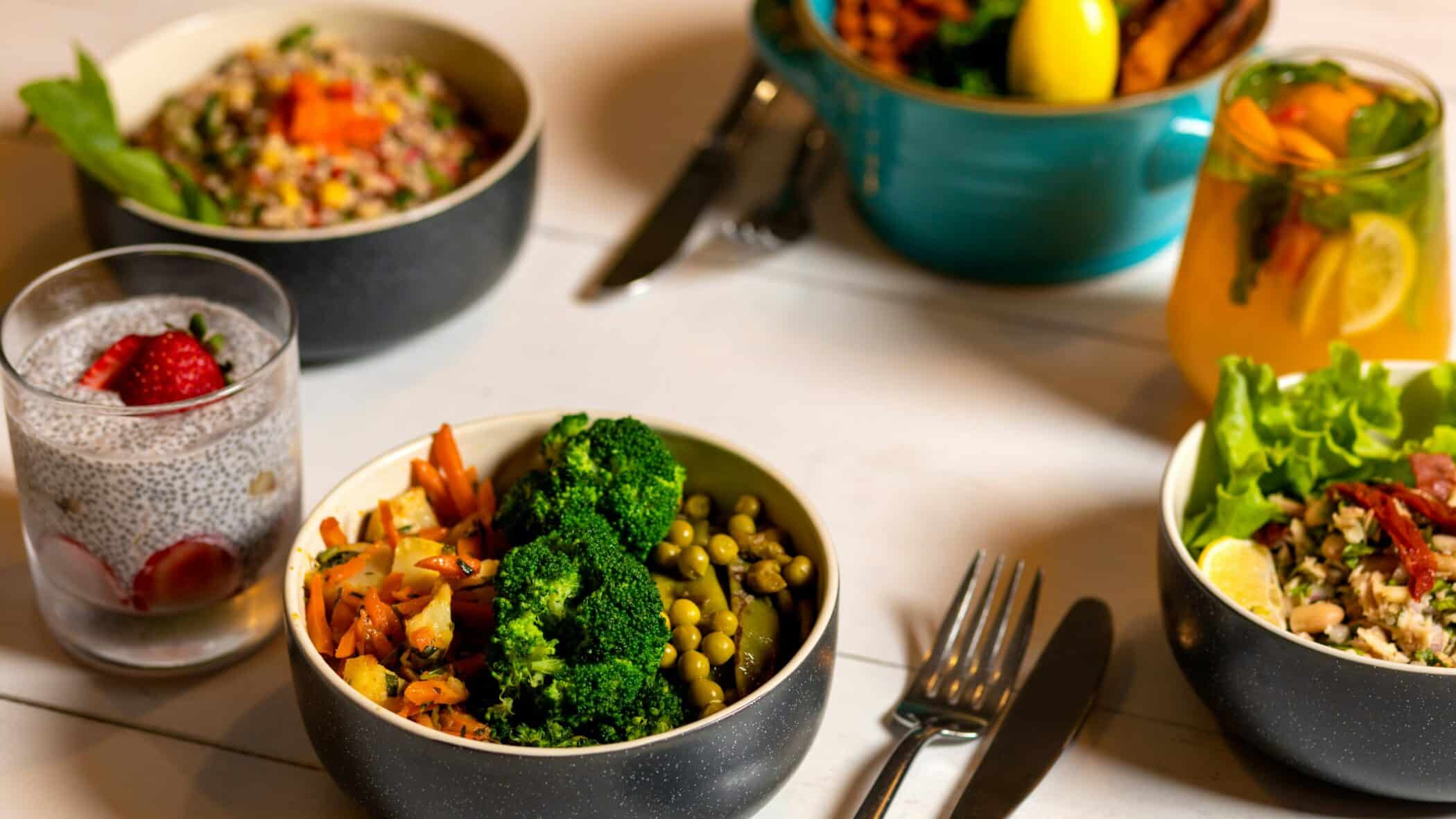
When you want to eat a nutritious diet, you might struggle with a busy schedule or inspiration for meals. Meal prep for athletes can be a good strategy for fueling your workouts and making sure that you have energy for every training.
It will not take too much time and you will always have ready-to-eat meals. We are sure that sounds great. Additionally, you will have the right portions and won`t have to worry about what to eat next.
A few hours one day a week will be enough for you to get started. You will need groceries and containers for your delicious meals. However, there are some things that you need to take into consideration before you start.
Table of Contents
What are the benefits when athletes prep their meals?
Meal prep is a great thing when you want to stay on track with your fitness and nutritional goals. It is an easy way to keep your food consistent when you prep your dishes. There are many benefits of prepping your meals and some of them are:
- You will not waste time thinking about what is for dinner.
- It will not happen that you come home hungry and there is nothing to eat.
- Enough time to think ahead to prepare meals that will help you with your athletic goals.
- Your meals will fit a diet you follow.
- No more getting convenience foods, take outs or drive through
- You will save money and time
- Less time for prepping, cooking, and cleaning
How to start
Here are six steps that will help you start meal prepping and reaching your athletic goals.
1. Make your own game plan.
Decide what you want to prepare and how. Some people might choose to make full meals. Meanwhile, others just want to prep proteins, vegetables, and starches separately and then pull them together later. It is up to you to decide which way works for you and your schedule.
If you want to make full meals, you need to think about two questions
- Do you want cold or hot ones?
- How many times a week do you want to eat the same dish?
When you answer them, you will easily decide what is your next step. You will find a lot of ideas to experiment with. It can be something simple or something that requires more cooking skills.
If you decide to go simple by thinking about putting together a starch, a protein, and a few vegetables, that is a time saver, too. For instance, you can prepare one protein, and figure out a few different ways to serve it. Having grilled chicken in a greek bowl, wrap, or burrito bowl is delicious. You have one ingredient but in different, fun ways.
Once you decided this, it is time to go shopping. Stick to your list and you will see that is budget-friendly for your wallet. Also, it will help you prevent food waste because you will buy exactly what you need.
2. Find time for meal prepping.
At first, it might seem that you will need some extra time. But, by choosing a few hours on one day, you will soon see that you will have much more time during the week.
Sundays usually work because you will have enough food to get through the week and maybe not enough on the weekends. That can work because usually during the weekend we have more time.
If you need more food or you are not comfortable eating the same food for a few days, you might need an extra day. This can be helpful if you are an athlete with high-calorie needs or you just want to give yourself extra variety.
3. Figure out if you have enough food storage containers.
Before you start, you need to prepare enough storage for the food you are planning to make. Most importantly, there is no right way to do meal prep. Some people like to make and store all full meals for the whole week in separate containers.
Other people like to bulk prepare some things, like a big bowl of roasted vegetables, a few cooked proteins, or a bowl of salad – and then use them to create a meal each night. It is up to you which way is better.
Whichever way you choose, make sure you have enough containers with lids that are big enough. Even better, if they are microwave friendly. The best option might be glass. But, high-quality plastic containers can be convenient, too. They are good to take with you because they are lighter.
Consider smaller containers for things like condiments, nuts, dressings, and other additions to your meals. This is good because if they are together, they might ruin your food or get soggy.
Lastly, stock up on gallon size zip locks freezer bags. They are very convenient for storing things like protein pancakes or frozen breakfast sandwiches, and even soups.
4. Start cooking.
First, look a the recipes or ideas that you plan to cook. It might be something that you like or something that is not too difficult to make. Secondly, from that `pile` figure out what takes the longest to cook or what can go together into the oven at the same temperature. Start by chopping, seasoning, and putting on baking sheets.
Next, you can load up the racks with different pans of roasted vegetables, potatoes, and meats. These ingredients can easily be made in the oven. Set timers for everything so you don`t have to remember everything. That way you will not be overwhelmed and timers will remind you when to take pans out. Meanwhile, you can do other things.
Further, you can start working on any food that you need to prepare on the stovetop. Boil rice, fry chicken, steam vegetables, or anything else. During this time you can also make something that does not require cooking, like raw vegetables or energy balls.
5. Put everything together.
When you are done cooking, and when the food cooled down a little bit, you know that it is time to assemble.
Bulk items go into a container and then into the fridge. Individual meals need to be separated, so layout containers across the table, and assemble them in pieces. Work in a line style. For example, do the carbs first, then the vegetables, and then the proteins. It might be easier than creating one meal at a time.
Some people might prefer putting food containers in horizontal rows then to putting them on top of one another. It is up to you to decide which way works better.
For fresh food, like salads, put a paper towel on top of greens, and toppings, such as seeds, nuts, and berries, just put them on a side, so they won`t get soggy or mixed with lettuce. Do not put the dressing on a salad in advance. You will end up with a soggy salad instead of a fresh, beautiful, and delicious bowl.
6. Label your containers.
Tops of containers should have a piece labeling of or tape on the lid. When you do this, putting the meal name and date will be more organized. Leftovers can last in the fridge for three to five days, and when you have a date on the lid, you will easily see if the food is fresh or not.
Things that go in the freezer are also easier to manage when there is a date. Food in the freezer will stay safe for a long time, but quality can be different after a few months.
Meal planning and prepping
Meal planning and prepping do not have to be overly rigid or structured. They can work however you want or need them to. It can help you with a busy schedule, not having enough time for cooking every meal separately, or just even because you like it that way.
Meal prep can be different for everyone and it can include:
- Chopping meats and veggies
- Pre-washing fruits and vegetables
- Dividing ingredients or melas into containers for salads
- Sauteeing or baking vegetables for the week
- Making portions of snacks and putting them in individual bags or containers
- Grilling chicken breasts or baking potatoes at once
When you want to start and you are not sure if it would be a good idea to just prep some components of your meals. This can make things a lot simpler at the beginning.
You can also start with just a little preparation. Check what you already have in your fridge, and what you don`t have in your pantry so you need to buy. Write down your grocery list and take notes if you notice that there are more things that you are missing.
Talk with your colleagues, family members, and teammates about meal prepping. They might give you some ideas and cool recipes. Even better if you make it a team activity.
There are several reasons why people meal prep:
- Meal prepping will allow you to eat the food you like
- You will control your macronutrient and caloric intake
- People can find the schedule that suits them
- Fewer expenses for grocery shopping and less food waste
- Easy organizing every day and a whole week
- Meal planning and prepping will help you stay on track with your diet
The bottom line
The biggest benefit of meal prepping is that you are following your diet for sure. This guarantees results and it will motivate you to continue, which will provide more good results and so on. Altogether it can be quite powerful.
Even if you think starting everything from the beginning is too stressful and requires planning, don`t hesitate to start small steps. Some simple meal prep can do a lot for you, and then you go bigger and take a step further every week.
Meal prepping will give you more time to recover, sleep, and do other activities besides cooking. When you prep almost everything on your day off, you can do other things you like during the week. We are here to help if you have some questions or need some ideas on how to start.

